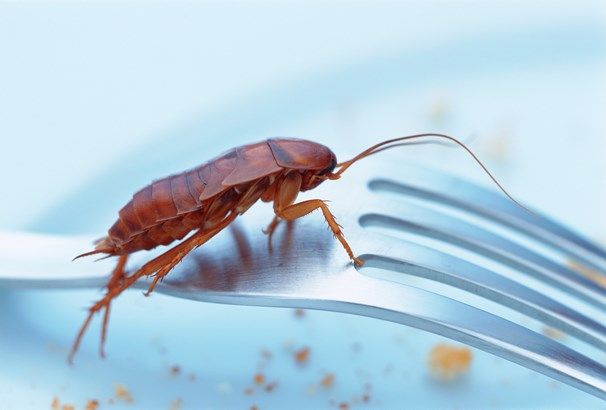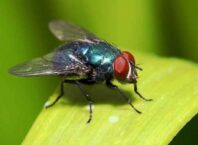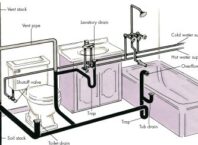What Are Cockroaches?
Cockroaches are resilient and adaptable insects belonging to the order Blattodea. These creatures have been around for millions of years and are known for their ability to thrive in diverse environments. Cockroach species vary, but they generally share common characteristics, including flattened bodies, long antennae, and rapid, scuttling movements. While there are thousands of cockroach species globally, some common ones include German cockroaches, Smoky brown cockroaches, American cockroaches, Asian cockroaches, and Brown-banded cockroaches.
Understanding the habits, behaviors, and appearances of different cockroach species is crucial for effective pest control, as it allows homeowners to identify and address infestations promptly. Cockroaches are nocturnal insects, preferring dark and damp spaces, making kitchens and bathrooms common hiding spots within homes. They are notorious for their resilience, adapting to various climates and surviving on a wide range of food sources. Despite their unsavory reputation, studying cockroaches helps implement strategies for prevention and eradication, ensuring a pest-free living environment.
How to Identify Cockroaches
German Cockroaches
German cockroaches are among the smallest, boasting a light brown color and distinctive parallel stripes on their backs. They are notorious indoor dwellers.
Smoky brown Cockroaches
Recognizable by their dark brown or black color and swift, airborne movements, Smokybrown roaches are often found outdoors but can venture inside.
American Cockroaches
The largest of the bunch, American cockroaches are reddish-brown with a distinct yellowish figure-eight pattern on their heads. They prefer dark, damp areas.
Asian Cockroaches
Resembling the common German cockroach, Asian roaches are attracted to light and share a similar appearance. They can be a nuisance, especially in outdoor spaces.
Brown-banded Cockroaches
Smaller in size with light brown bands across their bodies, Brown-banded roaches prefer warmer, drier locations and can infest various living spaces.
| TYPES OF COCKROACHES | COLOR | SIZE AND SHAPE | REGION |
|---|---|---|---|
| German Cockroach | Light brown and tan | ½ to ¾ inches long; lat, oval shape; two parallel stripes down back | Found all over the U.S. |
| American Cockroach | Reddish brown | Adults can be over two inches in length; flat, oval shape | Found all over the U.S. |
| Smoky brown Cockroach | Dark brown | 1 to 1 ½ inches long; slightly rounded; ong wings | Primarily found in Florida but throughout the southern U.S. |
| Brown-banded Cockroach | Brown and light brown | ½ inch long; light brown bands around the wings and body | Found all over the U.S. |
| Asian Cockroach | Light brown | ½ to ¾ inches in length; long wings . | Found in southern the U.S |
What Do Cockroaches Look Like?
Cockroaches exhibit a set of common characteristics that define their appearance, although specific features can vary among different species. Generally, cockroaches share the following physical traits:
1. Flattened Bodies: Cockroaches typically have flat, oval-shaped bodies, allowing them to squeeze into tight spaces and navigate through cracks and crevices with ease.
2. Long Antennae: These insects possess long and slender antennae, which they use for sensory perception. The antennae help them detect changes in their environment, locate food, and navigate in the dark.
3. Rapid Scuttling Movements: Cockroaches are known for their swift and agile movements. They can move quickly across various surfaces, making them challenging to catch.
4. Dark Coloration: While the color can vary, cockroaches are often dark brown or black. Some species may have patterns or markings on their bodies, aiding in species identification.
5. Wings (in some species): Certain cockroach species have wings, although not all are capable of sustained flight. The presence or absence of wings can be a distinguishing feature.
6. Six Legs: Like all insects, cockroaches have six legs. Their legs are adapted for rapid movement and can cover considerable distances in a short amount of time.
What Do Cockroach Droppings Look Like?
Cockroach droppings, also known as fecal matter or frass, vary in appearance depending on the species of cockroach. However, some general characteristics can help identify them:
1. Size and Shape: Cockroach droppings are typically small and cylindrical. The size may range from specks to larger pellets, depending on the cockroach species.
2. Color: The color of cockroach droppings can vary. Fresh droppings may appear dark brown or black, resembling coffee grounds. Over time, they can become dry and lighter in color.
3. Location: Cockroach droppings are often found near their hiding spots, pathways, or feeding areas. Common locations include kitchen cabinets, drawers, along baseboards, and in dark corners.
4. Grouping: Cockroach droppings may be scattered or grouped in specific areas. Accumulations of droppings can indicate the frequency of cockroach activity.
Identifying cockroach droppings is essential for recognizing a potential infestation. Regular cleaning and prompt removal of droppings, along with targeted pest control measures, can help manage and eliminate cockroach populations.
Where Are Cockroaches Usually Found?
Cockroaches are highly adaptable insects that can be found in various environments, often thriving in locations that provide the ideal conditions for their survival. Common hiding spots and habitats for cockroaches include:
1. Kitchens: Cockroaches are attracted to the warmth and abundance of food sources found in kitchens. They often hide in cracks, crevices, and behind appliances.
2. Bathrooms: The damp and humid conditions in bathrooms create an attractive environment for cockroaches. They may hide in dark corners, under sinks, and around plumbing fixtures.
3. Basements and Crawl Spaces: Dark and secluded areas like basements and crawl spaces provide ideal hiding spots for cockroaches. They often seek shelter in these environments.
4. Wall Voids: Cockroaches may find their way into wall voids, using the spaces between walls as pathways to move throughout a building. They can access these voids through gaps or cracks.
5. Trash Areas: Garbage and trash bins are rich sources of food for cockroaches. They may congregate in and around trash areas, especially if waste is not properly sealed or disposed of regularly.
6. Cracks and Crevices: Cockroaches are skilled at squeezing into tight spaces. They often hide in cracks, gaps, and crevices in walls, floors, and furniture.
7. Electronic Appliances: Warmth from electronic appliances attracts cockroaches. They may take refuge in and around devices such as refrigerators, stoves, and ovens.
8. Storage Areas: Cluttered storage areas provide hiding places for cockroaches. They may infest cardboard boxes, piles of papers, or stored items in attics and closets.
What Are the Signs You Have a Cockroach Infestation?
Detecting a cockroach infestation involves recognizing specific signs that indicate the presence of these resilient pests. One of the most apparent indications is frequent sightings of cockroaches, especially during nighttime hours when they are most active. Additionally, observing cockroach droppings resembling small, dark pellets near their hiding spots or along their common pathways is a clear sign. The presence of egg casings, often referred to as oothecae, is another indicator that a cockroach population may be thriving in the vicinity. An unpleasant musty odor can permeate areas with a substantial cockroach presence. Regular and thorough inspections of potential hiding spots, such as kitchens, bathrooms, and dark corners, are essential to promptly identify and address a cockroach infestation before it becomes more extensive.
What Damage Can Cockroaches Cause to Your Home?
Beyond the visceral discomfort they bring, cockroaches can contaminate food, trigger allergies, and even damage electronics and fabrics. They are a threat to both hygiene and home integrity.
How to Get Rid of Cockroaches
1. Step on Them
A direct approach, though not for the faint-hearted. Effective for solitary roaches but not scalable for infestations.
2. Baking Soda
Mixing baking soda with sugar as bait, when ingested, reacts with stomach acids, causing lethal gas. Effective for targeted applications.
3. Boric Acid
A natural insecticide, boric acid disrupts the roaches’ digestive system when ingested. Best applied in areas inaccessible to pets and children.
4. Citrus or Peppermint Sprays
Cockroaches despise the scent of citrus or peppermint. Spraying these oils can act as a deterrent. Regular application is key.
5. Diatomaceous Earth
This fine powder damages the exoskeleton of roaches, leading to dehydration and death. Should be applied strategically in areas of roach activity.
6. Professional Cockroach Services
For severe infestations, seek professional pest control services offering tailored solutions. A comprehensive approach ensures lasting results.
Types of Treatment
Treatment options range from bait traps and insecticides to natural remedies, depending on the severity of the infestation. Combining methods often yields the best results.
How Much Does It Cost to Get Rid of Cockroaches?
Costs vary based on the treatment method, the extent of the infestation, and whether professional services are enlisted. Professional services may have upfront costs but offer long-term value.
How to Prevent Cockroaches
1. Keep the House Clean
A clean environment denies roaches food sources and hiding spots. Regular cleaning, especially in kitchen areas, is paramount.
2. Fix Leaks and Moist Areas
Eliminate water sources by repairing leaks and addressing moisture-prone areas. Roaches are attracted to damp environments.
3. Keep the Landscaping Trimmed Back
Trimming foliage reduces outdoor hiding spots for cockroaches. Maintain a clear perimeter around the home.
4. Seal Gaps
Prevent entry by sealing cracks and gaps in walls, windows, and doors. Roaches can exploit even the smallest openings.
Banishing cockroaches demands a multifaceted approach, combining cleanliness, preventive measures, and targeted treatments. Whether opting for DIY solutions or professional services, a proactive stance ensures a roach-free home.
Also Read: How To Get Rid Of Flies Outside
Frequently Asked Questions:
- Are cockroaches harmful to health?
Yes, cockroaches can pose health risks as they carry bacteria and allergens. Their presence may trigger allergies and asthma in some individuals. - What are common signs of a cockroach infestation?
Look out for frequent sightings, droppings resembling coffee grounds, egg casings, and an unpleasant musty odor. These signs indicate a potential infestation. - Can I get rid of cockroaches using DIY methods?
DIY methods like using baits, sprays, and cleaning extensively can help control small infestations. However, severe infestations may require professional pest control services. - How can I prevent cockroach infestations in my home?
Maintain cleanliness, seal entry points, fix leaks promptly, and keep food tightly sealed. Regular inspections and preventive measures create an environment less conducive to cockroach survival.

















































































